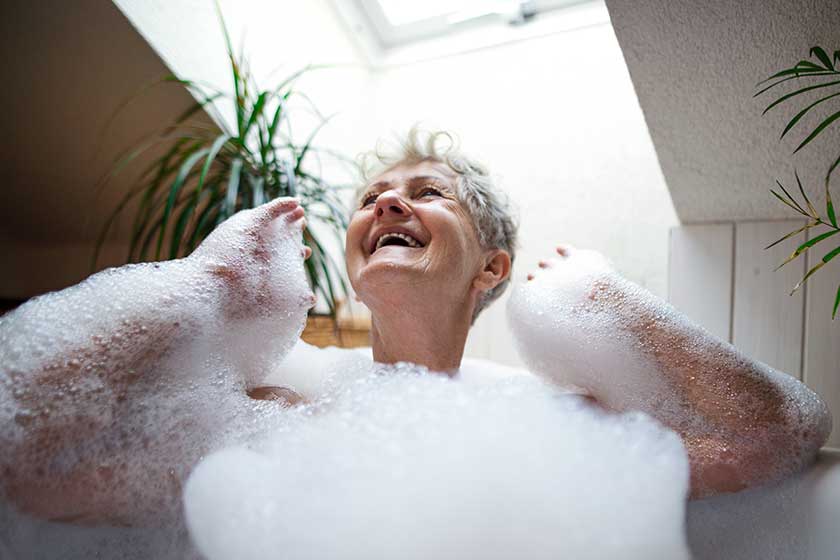Bath-time can be an issue for caregivers and their older loved ones. Attempting to persuade them to take a bath or shower may frequently lead into squabbles, antagonism, sobbing, or shouting. Everyone’s day is ruined, and your stress level skyrockets. While it’s a hassle to bathe an older adult, a huge concern is that not bathing may result in skin issues or urinary tract infections. Lack of baths could also lead to older folks developing itchiness or strong body odor. If you’re not sure how frequent baths should be for older folks and whether to opt for shower or washing, read on.
Daily Baths Are Not Necessary
We may be used to showering daily, but it isn’t a hard and fast rule. In fact, baths at least once or twice a week can be sufficient to prevent skin breakdowns and infections. As an alternative to daily baths, you can do a wipe-down with warm washcloths. Crucial areas to wipe include places like armpits, genitals, groin, feet, and between skin folds to reduce body odors.
Dementia caregivers should note that incorporating baths into the daily routine can be useful. That’s because once bathing becomes a habit, it’s less of a struggle for the older adults. A consistent daily schedule relieves tension and worry and increases the likelihood that they will bathe without resistance. Remember to take into consideration any specific health conditions when working out a bathing schedule.
Running Water is not Always Needed
It’s definitely easier to shower or bathe in the tub, but some older adults may find this difficult due to limited mobility. In that case, sponge baths work out just as well.
When giving a sponge bath, make sure to keep your loved one warm. Using a damp sponge, work your way from the face and head down the body. Wash the groin and genitals last as these areas are the usually the least clean.
Only uncover the body parts that are currently being washed, to conserve warmth and privacy. Wipe one area at a time and change the washcloth as you go to avoid cross-contamination.
In some cases, consider waterless cleansers, bathing wipes and no-rinse shampoos if needed.
To improve the no-water bathing experience, try keeping the room warm, playing some calming music, incorporating dim lighting, or adding in massages during the bath.
Prevent Urinary Tract Infections with Thorough Cleaning
Cleaning with wet wipes after using the toilet, especially bowel movements, can help avoid the dreaded urinary tract infections. Be sure to use a clean section or fresh piece for each wipe, and women should always wipe from front to back. You may even consider installing a bidet in the toilet for easy and convenient cleaning.
For older adults who use incontinence briefs, be sure to check them regularly – every two hours – and change the briefs. They shouldn’t be wearing dirty briefs for too long. While changing, make sure to cleanse with wet wipes.
If you are having trouble, consider the Assisted Living option at The Park Oak Grove with Showering and bathing assistance and 100% satisfaction guarantee.








